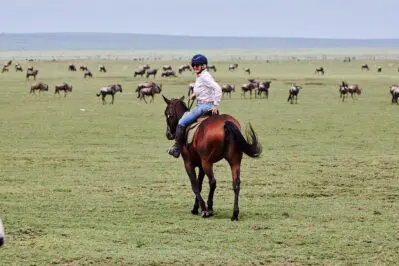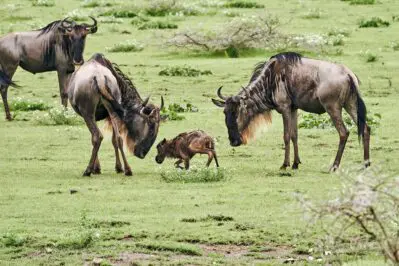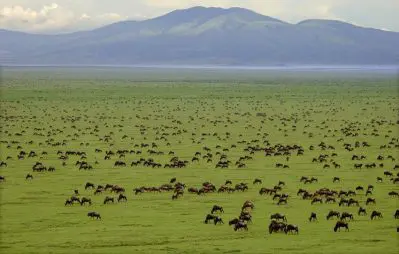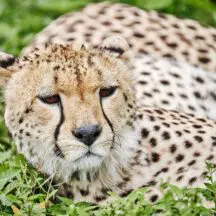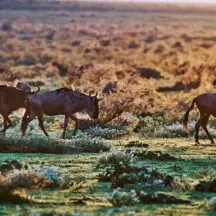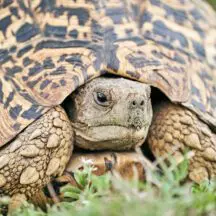Serengeti. The word alone conjures images of expansive plains glowing orange under a huge setting sun while large animals trek past silhouetted trees the shape of expansive umbrellas. The Serengeti is a geographic region and ecosystem in the African Republic of Tanzania but it is also a concept, an idea that an area can be extremely vast, yet also accessible.
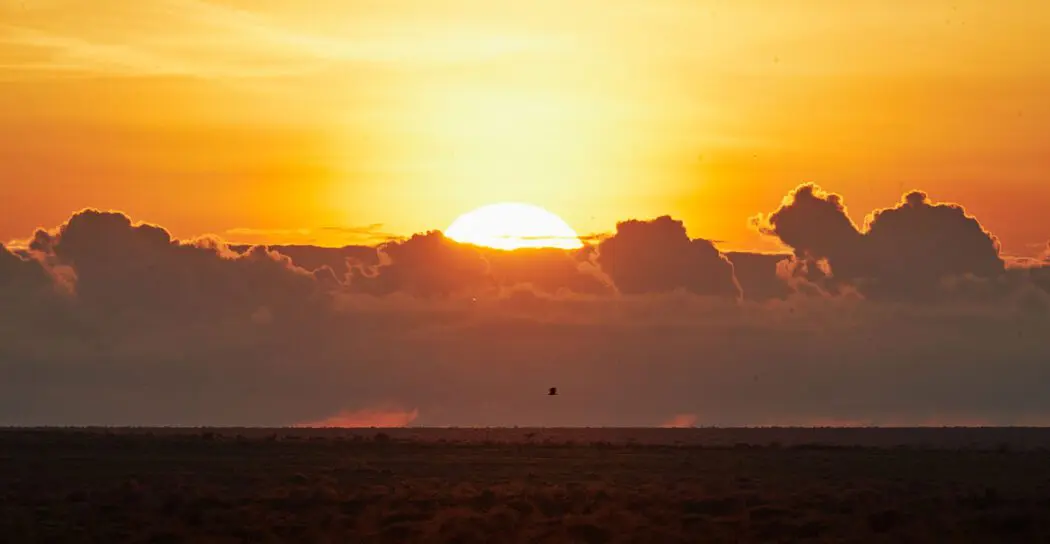
Every year the Serengeti hosts the world’s largest land animal migration, making it one of the 10 natural wonders of the world. Over two million mammals including wildebeest, gazelles and zebra move from the Ngorongoro Conservation Area in southern Tanzania through the Mara and Arusha regions, including Serengeti National Park, and north towards Kenya.
Measuring over 800,000 square kilometers, the country of Tanzania boasts 23 national parks, the first of which was the Serengeti established in 1951. It measures almost 15,000 square kilometers and is divided into three main sectors including the plains, Western Corridor, and the Northern Serengeti. It’s the plains that are most famous, though, because of the endless grasslands dotted with rocky outcroppings called Kopjes. It’s here where many big cat species reside, such as lions and cheetahs, as well as giraffes, elephants, hyenas, and the rare black rhino.
Our Serengeti Migration ride usually starts in Gol mountains, which were famous in the old days for large buffalo herds and became a very well known, remote hunting area. To the north are the Serengeti plains, which stretch all the way to the Kenya border and are famous for the plains games like Thompsons gazelle and impala, as well as predators like lion and the more elusive cheetah and leopard.
To the the east is Lake Natron, a large soda lake which supports the largest number of flamingoes in the world who nest there, tolerating the salinity and feeding on shrimp. Also in this area is the active volcano of Ol Doinyo Lengai and you can often see its smoke as you ride nearby. To the south are the Ngorongoro highlands, often shrouded in clouds. You’ll ride along the foot of the highlands, dotted with the Masai manyattas, which are circular thorn fences protecting the tribe’s mud and brush huts and livestock. To the west is the rift valley with Lake Manyara, which you probably will fly over on the plane between Arusha, and Lake Eyasi. The Hadza is a stone age tribe similar to the bushman who live off the land near its shores. The ride also passes through Olduvai Gorge, made famous by Louis and Mary Leakey and their studies of early man. Their most recent discovery of hominid footsteps at Laetoli was made close to where you ride.
History of the Serengeti
Animals have migrated across the Serengeti in search of fresh pastures and water since time immemorial. Given that Tanzania is one of the oldest continuously inhabited areas on Earth, it’s likely humans spent time in the region hunting large game. In terms of recent history, the Masai people discovered the region about two centuries ago and brought their cattle to graze. Some accounts claim the name “Siringeti,” which means “the lands that run endlessly,” came from the Masai language.
- Following the migration
- Witness special moments
- See vast land and animals on this tour of the Serengeti
After a period of colonialism, Tanzania was formed in 1964 and the country’s first president, Mwalimu Julius Nyerere, recognized the importance of the local fauna saying in his now-famous speech, “The survival of our wildlife is a matter of grave concern to all of us in Africa. These wild creatures amid the wild places they inhabit are not only important as a source of wonder and inspiration but are an integral part of our natural resources and our future livelihood and wellbeing.”
Since then, the government has protected 43.7% of the total land mass of Tanzania with national parks, game controlled areas, and forest reserves. The Serengeti National Park is the largest at 14,763 square kilometers and every year more than 300,000 tourists visit.
Conservation Areas of Tanzania
In addition to being a national park, the Serengeti is also one of eight UNESCO World Heritage Sites in Tanzania and there are five others slated for similar classification. Additional protected regions include the Ngorongoro Conservation Area, the Selous Game Reserve, the Uwanda Game Reserve, four marine reserves, and 14 nature forest reserves.
The country’s Ministry of Natural Resources and Tourism oversees the management of most of these sites not just because of their importance to biodiversity but because the reserves and parks are largely responsible for the country’s tourism industry. By ensuring the health of its ecosystems and the safety of its visitors, Tanzania increased its tourist arrivals to a record-breaking 1.8 million in 2023, up from 1.4 million the year earlier.
Culture of the Serengeti
Parts of the Serengeti ecosystem is inhabited by the Masai, who are traditional pastoralists who have small-scale agricultural settlements. The men herd their cattle away from areas where wildebeest migrate for the cattle’s health, as tsetse flies can carry disease from one species to another. Women stay near the manyattas to manage the children and the family boma, and greet you as you ride by, displaying their beaded work and handicrafts.
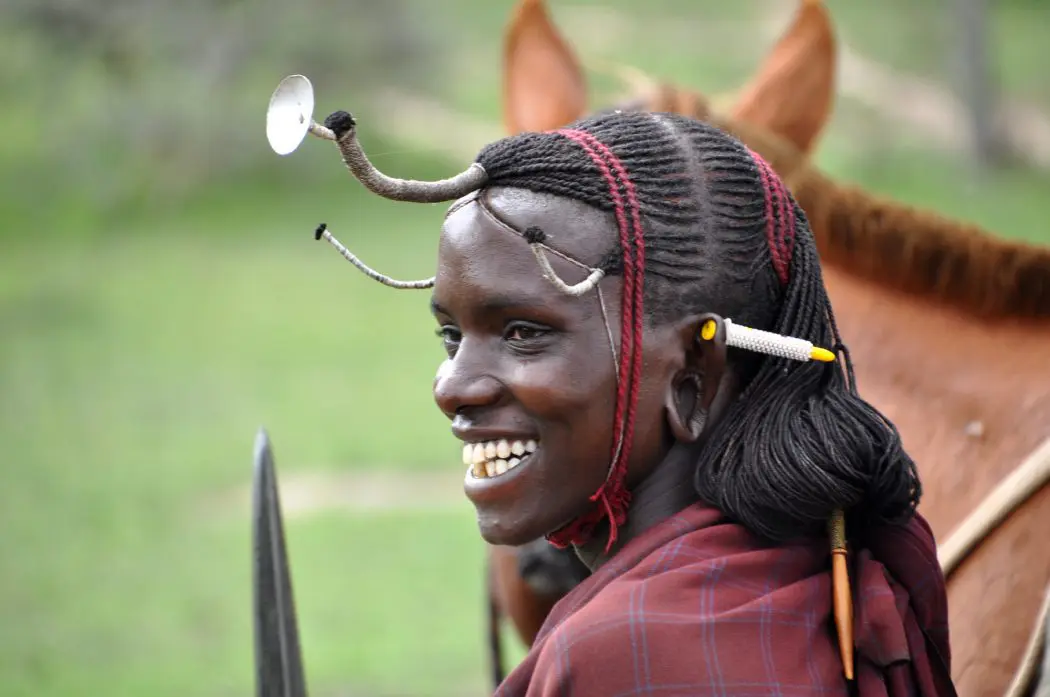
Observe the customs of local Masai people
Wildlife of the Serengeti
While the rich and varied cultures of the Serengeti’s indigenous tribes are definitely a draw for visitors, the Serengeti’s main attraction is the region’s wildlife. Aside from the wildebeest, gazelle and zebra taking part in the Great Migration, there are a dozen other grazers, as well as big cats and other carnivores, small mammals, primates, reptiles and over 500 species of birds. Below is a small selection of what a visitor could see during a trip to the Serengeti.
The Big Five: The Serengeti is home to the largest population of lions in Africa, with over 2,500 individuals. There are also about 1,000 leopards, 5,000 elephants, and 53,000 buffalo. The endangered Black Rhino also roams the plans and is fiercely guarded against poaching.
Grazers: In addition to the ungulates listed above, the Serengeti is also home to a vast array of grazers from the very large, such as the hippo, which can weigh up to 9,000 pounds, to the very small, such as the dik dik antelope that stands only 40 cm high. Other grazers include warthogs, giraffes, and Impala.
Other Carnivores: Cheetahs round out the list of big cats in the Serengeti but there are other carnivore including hyenas, jackals, wild dogs, honey badgers and mongoose.
Small Mammals and Reptiles: Some small mammals of the Serengeti are well-known, such as the aardvark and crested porcupine, but others are more obscure such as the hyrax, and the appropriately named bat-eared fox. The Serengeti is home to many different reptiles as well including chameleons, tortoise and the Nile crocodile, one of the world’s largest reptiles.
Primates: Baboons, and Vervet monkeys are prolific in this area.
Birds: Over 500 species of birds inhabit the Serengeti National Park, including some of the world’s largest, such as the Masai ostrich, and the smallest, such as the colorful Fisher’s Lovebird. Visitors will also find storks, guinea fowl, flamingos, cranes, and hornbills.


